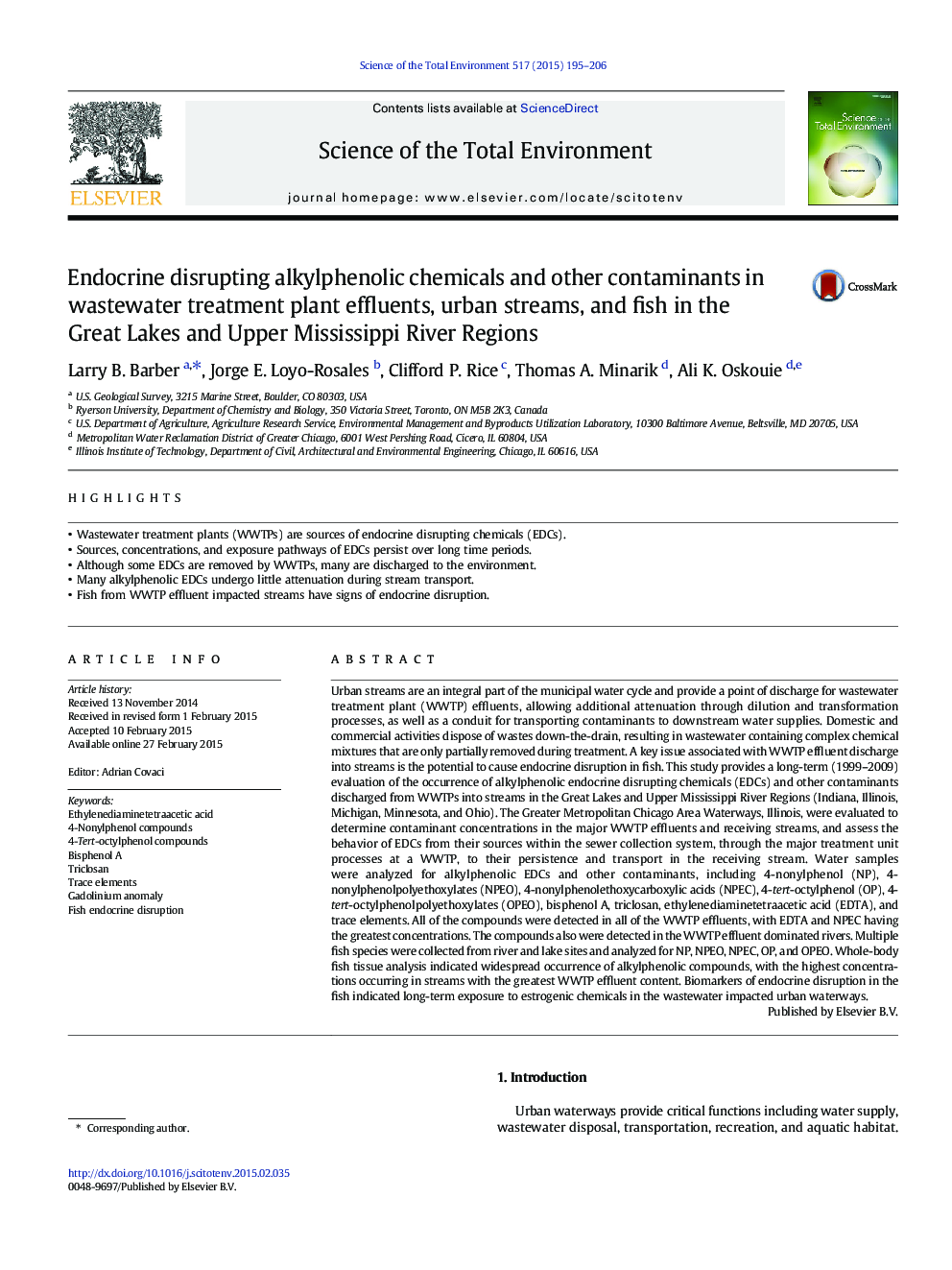| کد مقاله | کد نشریه | سال انتشار | مقاله انگلیسی | نسخه تمام متن |
|---|---|---|---|---|
| 4428433 | 1619762 | 2015 | 12 صفحه PDF | دانلود رایگان |
• Wastewater treatment plants (WWTPs) are sources of endocrine disrupting chemicals (EDCs).
• Sources, concentrations, and exposure pathways of EDCs persist over long time periods.
• Although some EDCs are removed by WWTPs, many are discharged to the environment.
• Many alkylphenolic EDCs undergo little attenuation during stream transport.
• Fish from WWTP effluent impacted streams have signs of endocrine disruption.
Urban streams are an integral part of the municipal water cycle and provide a point of discharge for wastewater treatment plant (WWTP) effluents, allowing additional attenuation through dilution and transformation processes, as well as a conduit for transporting contaminants to downstream water supplies. Domestic and commercial activities dispose of wastes down-the-drain, resulting in wastewater containing complex chemical mixtures that are only partially removed during treatment. A key issue associated with WWTP effluent discharge into streams is the potential to cause endocrine disruption in fish. This study provides a long-term (1999–2009) evaluation of the occurrence of alkylphenolic endocrine disrupting chemicals (EDCs) and other contaminants discharged from WWTPs into streams in the Great Lakes and Upper Mississippi River Regions (Indiana, Illinois, Michigan, Minnesota, and Ohio). The Greater Metropolitan Chicago Area Waterways, Illinois, were evaluated to determine contaminant concentrations in the major WWTP effluents and receiving streams, and assess the behavior of EDCs from their sources within the sewer collection system, through the major treatment unit processes at a WWTP, to their persistence and transport in the receiving stream. Water samples were analyzed for alkylphenolic EDCs and other contaminants, including 4-nonylphenol (NP), 4-nonylphenolpolyethoxylates (NPEO), 4-nonylphenolethoxycarboxylic acids (NPEC), 4-tert-octylphenol (OP), 4-tert-octylphenolpolyethoxylates (OPEO), bisphenol A, triclosan, ethylenediaminetetraacetic acid (EDTA), and trace elements. All of the compounds were detected in all of the WWTP effluents, with EDTA and NPEC having the greatest concentrations. The compounds also were detected in the WWTP effluent dominated rivers. Multiple fish species were collected from river and lake sites and analyzed for NP, NPEO, NPEC, OP, and OPEO. Whole-body fish tissue analysis indicated widespread occurrence of alkylphenolic compounds, with the highest concentrations occurring in streams with the greatest WWTP effluent content. Biomarkers of endocrine disruption in the fish indicated long-term exposure to estrogenic chemicals in the wastewater impacted urban waterways.
Journal: Science of The Total Environment - Volume 517, 1 June 2015, Pages 195–206
